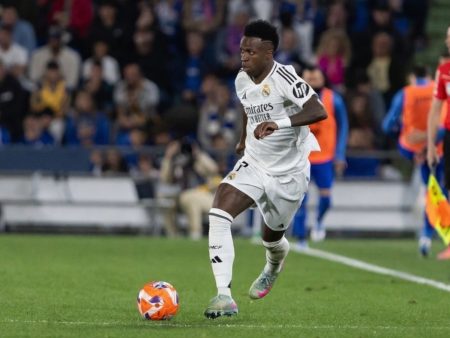Comprehensive Analysis: Borussia Dortmund’s Tactical Triumph Over FC Copenhagen
Borussia Dortmund’s Champions League campaign kicked off with a commanding 3-0 win over FC Copenhagen, signaling a promising start to the season under Edin Terzic. Despite several squad adjustments and ongoing tactical refinements, the team has demonstrated resilience and tactical maturity, suffering only one defeat thus far and clinching six victories and one draw. This article delves into the key tactical elements and player performances that fueled Dortmund’s success in their opening European fixture.
Deploying the 4-2-3-1: Dortmund’s Tactical Foundation
Terzic set up his side in the familiar 4-2-3-1 structure. The system utilized Julian Brandt and Marco Reus in creative advanced roles, operating almost as dual attacking midfielders. Out of the lineup that secured a narrow league win against Hoffenheim, seven retained their starting positions, despite absences due to injuries, which left the bench options limited.
With Mahoud Dahoud, Karim Adeyemi, and Donyell Malen unavailable, Thorgan Hazard earned a starting opportunity but had to leave the pitch within the first 23 minutes following an injury, making way for Gio Reyna’s significant contribution.
Dominance With the Ball: Fluidity and Creative Connections
Dortmund asserted their authority in possession, ending the match with 63% control of the ball. Their build-up morphed into an aggressive 2-1-7 attacking shape, in which only the two central defenders and holding midfielder Salih Özcan maintained deeper positions. Their role centered on circulating the ball through progressive central passes, as well as stretching the play through wide switches.
The build-up phase frequently appeared as a 2-3-5 when fullbacks Thomas Meunier and Raphaël Guerreiro advanced alongside the midfield, providing options on the flanks or delivering support for short wide passes. Dortmund’s main attacking routes included:
– Central vertical passes into Reus, Brandt, and Bellingham, maximizing movement between the lines.
– Overlapping and underlapping fullbacks facilitating combinations down the touchlines.
– Wide rotations enabling Brandt in particular to exploit spaces with Meunier, creating overloads on the right.
Meunier and Brandt’s collaboration on the right continued to be a highlight, each carving out two opportunities, consistently pressuring Copenhagen’s defense. While Meunier overlapped on the outside, Brandt moved inwards, drawing defenders and creating spaces for incisive passes or deliveries into the box.
On the left, Guerreiro’s movement was more varied, often underlapping—especially during fast transitions. An example was seen in Dortmund’s third goal, with Guerreiro exploiting central channels and bursting forward late to finish an attack.
Key Individual Performances and Impact Substitutions
Gio Reyna’s early introduction proved pivotal. Taking advantage of wide positioning and Guerreiro’s ability to hold width, Reyna drifted inside to participate effectively in the half-spaces. This tactical flexibility yielded two assists and three created chances, enhancing Dortmund’s offensive edge without disrupting Reus and Brandt’s central influence.
Jude Bellingham was repeatedly subject to tactical fouls by Copenhagen, a testament to his impact in progressing play. Nevertheless, Bellingham remained unfazed, continuing to orchestrate attacks with composure and drive.
Up front, Anthony Modeste found few openings, registering only 18 touches, but was continually supplied by Brandt’s creativity and Meunier’s crosses. His lack of clinical finishing highlights an area for improvement in Dortmund’s forward line, and the subsequent introduction of Youssoufa Moukoko offered renewed directness and threat behind the opposition defense.
Disciplined Defense: Structured Pressing and Transition Control
Defensively, Dortmund maintained their 4-2-3-1 block, shifting at times into a 4-4-2 when pressing higher with Reus supporting the front line. Their standout quality this match was relentless counter-pressing. Upon any turnover, the front players—Reus, Brandt, and Bellingham—immediately closed down the ball, forcing quick errors.
Fullbacks dropped back to recalibrate while Özcan often stepped up to intercept or break up transitions. Özcan’s timing and mobility in these scenarios, alongside new centre-back Nico Schlotterbeck’s proactive challenges, fortified Dortmund against quick counters and stifled Copenhagen’s build-up.
Notably, all three Dortmund goals originated within 10 seconds of regaining possession, underlining the effectiveness of their high pressing system. The sequence for Guerreiro’s goal typified this, showcasing tight pressing, quick support, and exploiting defensive mistakes.
Looking Ahead: Can Dortmund Bring This Intensity to the Bundesliga?
This match illustrated Dortmund’s progress not only in attacking creativity but also in defensive solidity and transition management. If they maintain such relentless pressing and organization domestically, the team is well positioned to overturn its previous reputation for defensive lapses and become contenders for greater success both in Germany and Europe.
Conclusion
Dortmund’s 3-0 victory over FC Copenhagen showcased a blend of tactical innovation, effective player rotations, and in-game adaptability. Their aggressive use of possession, structured pressing, and flexibility in player roles signal a team on an upward trajectory under Edin Terzic. As the campaign continues, maintaining this level of focus and intensity will be crucial for sustained success.
For more football tactical analyses and insights into Dortmund’s evolving strategies, stay tuned to our latest updates.







